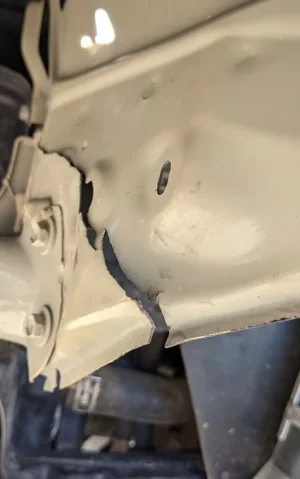Update: I now advise against doing this mod. See further in the thread on page 2 for full description.

Today I was finally able to replace the front body mounts on my Tacoma. It is any incredibly simple job, but something every Tacoma owner should have in mind to replace. The parts are cheap as well. All you need is the Energy Suspension busing set part number 9.4101G, a jack, some hand tools/wrenches, and a wood block to help lift the body.
Loosen the vertical bolt that secure the factory bushings. Use the wooden block on the jack to help lift the body off the bushing then replace and tighten down. Super easy.
Here's some before and after pictures.
The bushing before is seen below. Just being the bumper, in front of the suspension and below the radiator.

Removed they look pretty chewed up.


These are the new bushings before install.

Sadly I forgot to take an after photo. I will post one later. I will say that the front end sits a bit higher overall. My front cutline on the factory bumper was almost touching my bumper. It's now well clear of it by maybe 1/2" an inch. Definitely worth the time and cost to upgrade.
Loosen the vertical bolt that secure the factory bushings. Use the wooden block on the jack to help lift the body off the bushing then replace and tighten down. Super easy.
Here's some before and after pictures.
The bushing before is seen below. Just being the bumper, in front of the suspension and below the radiator.
Removed they look pretty chewed up.
These are the new bushings before install.
Sadly I forgot to take an after photo. I will post one later. I will say that the front end sits a bit higher overall. My front cutline on the factory bumper was almost touching my bumper. It's now well clear of it by maybe 1/2" an inch. Definitely worth the time and cost to upgrade.
Last edited:

